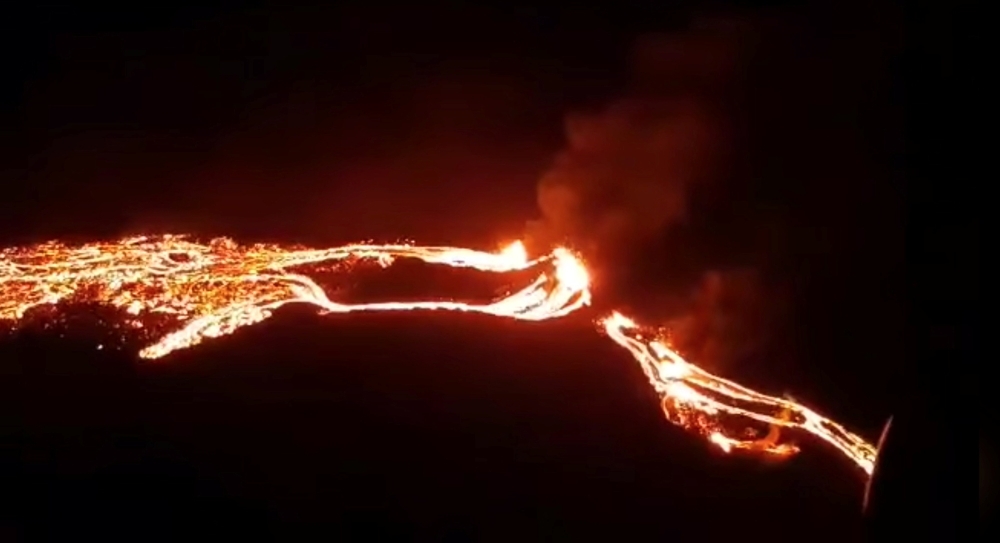AFP
A volcanic eruption started on Monday around 30 kilometres (19 miles) from Iceland's capital Reykjavik, the country's meteorological office said, marking the third time in two years that lava has gushed out in the area.
"The eruption is taking place in a small depression just north of Litli Hrutur, from which smoke is escaping in a north-westerly direction," the office said.
Footage circulating in the local media shows a massive cloud of smoke rising from the ground as well as a substantial flow of lava.
Thousands of small earthquakes have been recorded in the area in the week leading up to the eruption, signalling that the magma below the ground was moving and an eruption was imminent.
The magma broke through the ground at around 16:40 GMT, just a few kilometres from two previous eruptions in the last two years.
The first was on March 19, 2021 in the Geldingadalur valley and lasted six months and the second occurred on August 3, 2022 in the Meradalir valley, lasting three weeks.
Prior to the 2021 eruption, the region had remained dormant for eight centuries, but volcanologists believe the new cycle of increased activity could last several years.
The effusive eruptions that have occurred in this area so far have not been very dangerous, nor have they had any impact on air traffic.
"The eruption is taking place in a small depression just north of Litli Hrutur, from which smoke is escaping in a north-westerly direction," the office said.
Footage circulating in the local media shows a massive cloud of smoke rising from the ground as well as a substantial flow of lava.
Thousands of small earthquakes have been recorded in the area in the week leading up to the eruption, signalling that the magma below the ground was moving and an eruption was imminent.
The magma broke through the ground at around 16:40 GMT, just a few kilometres from two previous eruptions in the last two years.
The first was on March 19, 2021 in the Geldingadalur valley and lasted six months and the second occurred on August 3, 2022 in the Meradalir valley, lasting three weeks.
Prior to the 2021 eruption, the region had remained dormant for eight centuries, but volcanologists believe the new cycle of increased activity could last several years.
The effusive eruptions that have occurred in this area so far have not been very dangerous, nor have they had any impact on air traffic.









